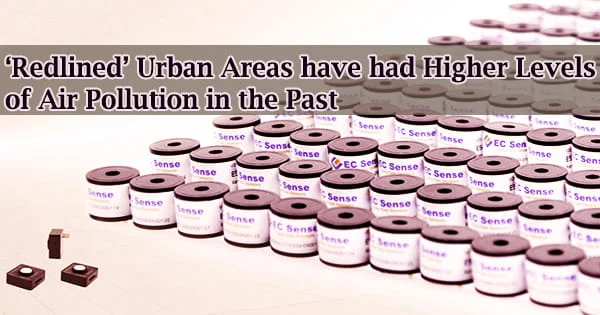The government-supported Home Owners’ Loan Corporation (HOLC) developed maps of communities in U.S. cities that reflected their desirability for mortgage lending in the aftermath of the Great Depression.
Many Black and immigrant neighborhoods received the lowest score, limiting access to federally backed loans and favorable mortgage terms. Researchers have now discovered that these “redlined” places have greater levels of air pollution 80 years later, as reported in the American Chemical Society’s Environmental Science & Technology Letters.
People of color, particularly Black and Hispanic Americans, are exposed to higher-than-average levels of air pollution at every socioeconomic level in the United States. Experts say the causes are complicated and partially founded in historical discriminating tendencies.
The HOLC began rating neighborhoods in American cities in the 1930s on a four-point scale: “A” (most desirable), “B” (still desirable), “C” (clearly deteriorating), and “D” (not desirable) (hazardous for mortgage appraisal; “redlined”). According to historical records, numerous neighborhoods were labeled “D” because they housed Black and immigrant populations.
Residents’ capacity to accumulate wealth through property ownership was hampered by this designation, which also affected later government land-use decisions to locate hazardous companies in or near “D” districts.
“A” (most desirable), “B” (still desirable), “C” (clearly deteriorating), and “D” (not desirable) (hazardous for mortgage appraisal; “redlined”).
Joshua Apte and colleagues from the University of California, Berkeley, wanted to see if there were any links between historical redlining and air pollution levels in 2010, the most recent census data available at the time.
The researchers concentrated on two major air pollutants: nitrogen dioxide (NO2), a short-lived gas generated by transportation, industry, and other sources, and fine particulate matter (PM2.5; longer-lived, tiny particles found in dust, soot, smoke, and other emissions, and also formed in the atmosphere).
The researchers matched HOLC maps from the 1930s with 2010 air pollution levels and census demographics for 202 cities in the United States, which account for 65 percent of the country’s urban population. They discovered that pollution levels were consistently connected to HOLC grade, particularly for NO2, which was 50% higher in “D” areas than “A” neighborhoods.
Air pollution differences were bigger by HOLC grade than by race and ethnicity at the national level. However, racial and ethnic inequalities were seen within each grade, with white people exposed to lower amounts of NO2 and PM2.5 than people of color.
Overall, the authors stress that current air pollution differences are due in part to decisions made decades ago. The authors mention that the US Environmental Protection Agency provided support.





